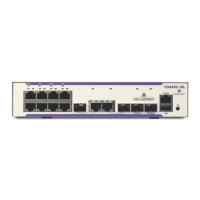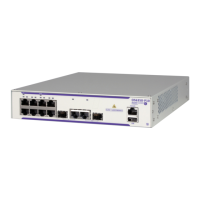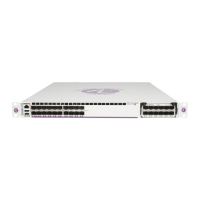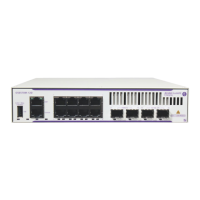Managing OmniSwitch 6450 Stacks Stack Cabling
OmniSwitch 6450 Hardware Users Guide September 2015 page 7-17
Stack Cabling
Switches in a stack are connected to each other by stacking cables. These stacking cables provide high-
speed, dual-redundant links between switches in a stack.
Stacking cables for OmniSwitch 6450 switches must be connected in an A-B pattern. In other words, the
cable connected to stacking port A of one switch must be connected to stacking port B of the adjacent
switch. In addition, for a stack to have effective redundancy, a redundant stacking cable must be installed
between the upper-most and bottom-most switch at all times. This provides effective failover in the event
of a stacking link or module failure within the stack.
The diagram below shows the required stacking cable pattern. For detailed information on assembling a
stack and connecting the cables, refer to Chapter 3, “OmniSwitch 6450 Chassis and Hardware Compo-
nents.”
Note. When planning the stack cabling configuration, keep in mind that the switch connected to stacking
port A of the primary switch will be assigned the secondary management role by default.
Example of Stacking Cable Pattern (Chassis Rear Panels Shown)
A stack of four switches in a crossed (stack-
ing port A to stacking port B) configuration.
Note that a redundant stacking cable con-
nection exists between the top and bottom
switches. This connection is required for
effective redundancy across the stack.
A B

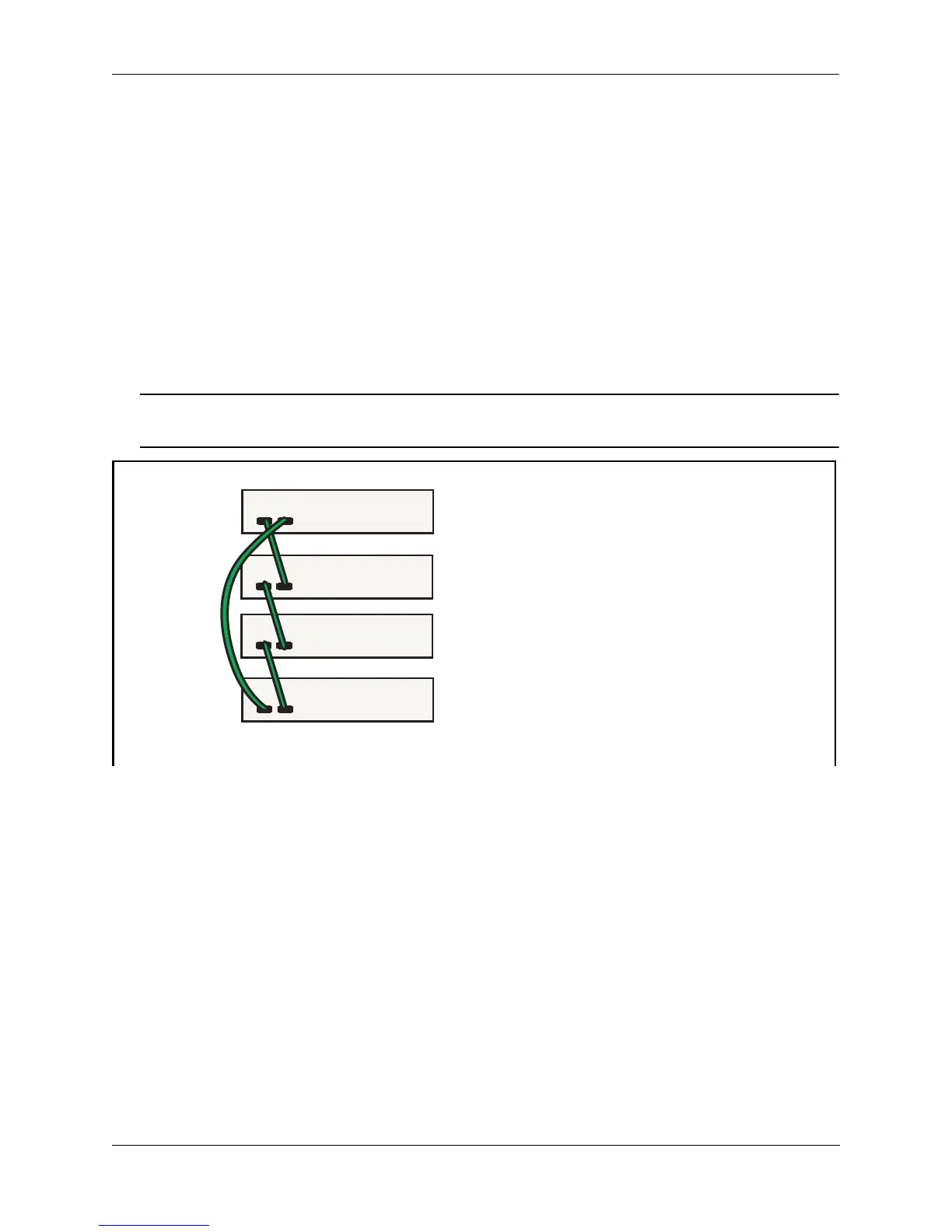